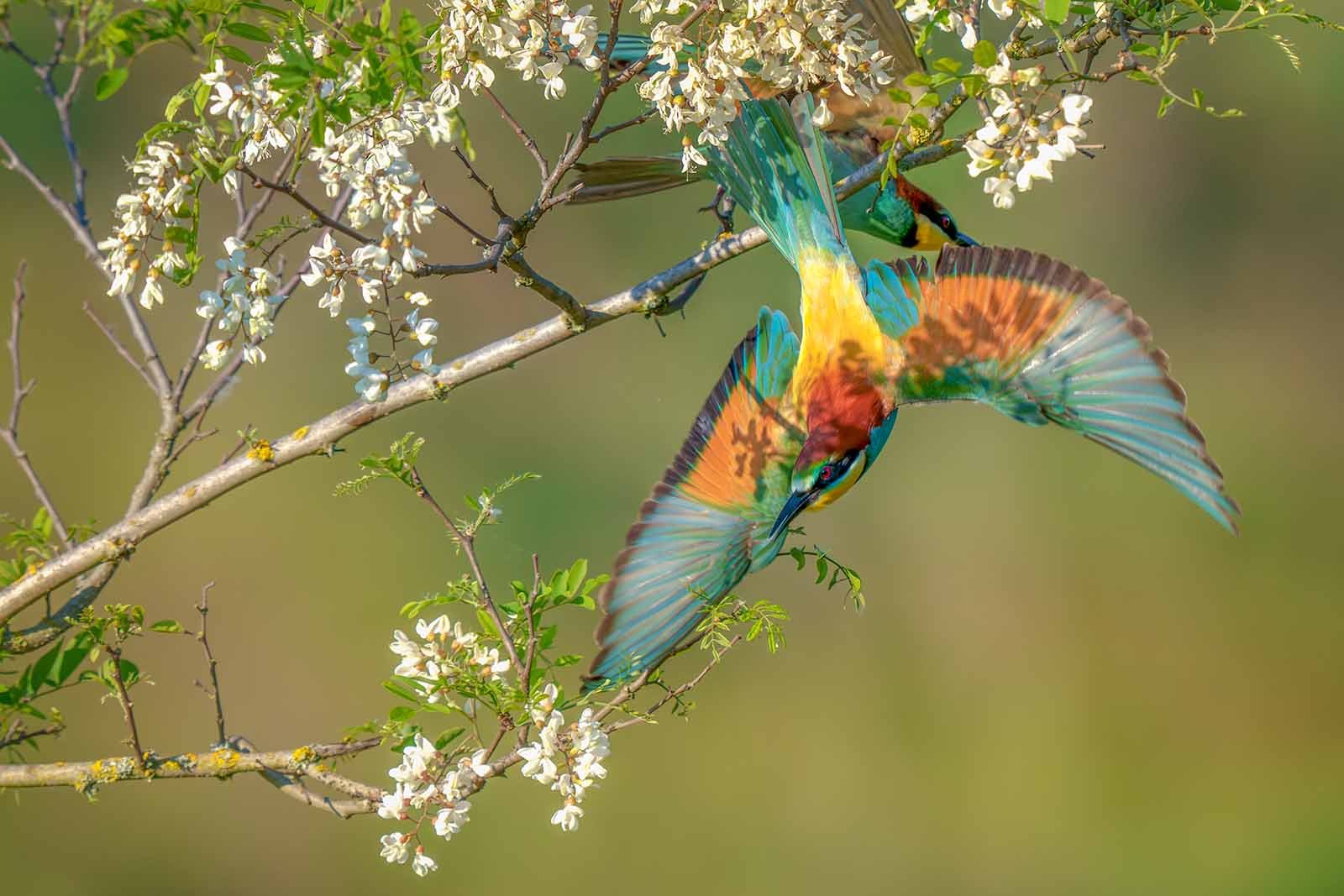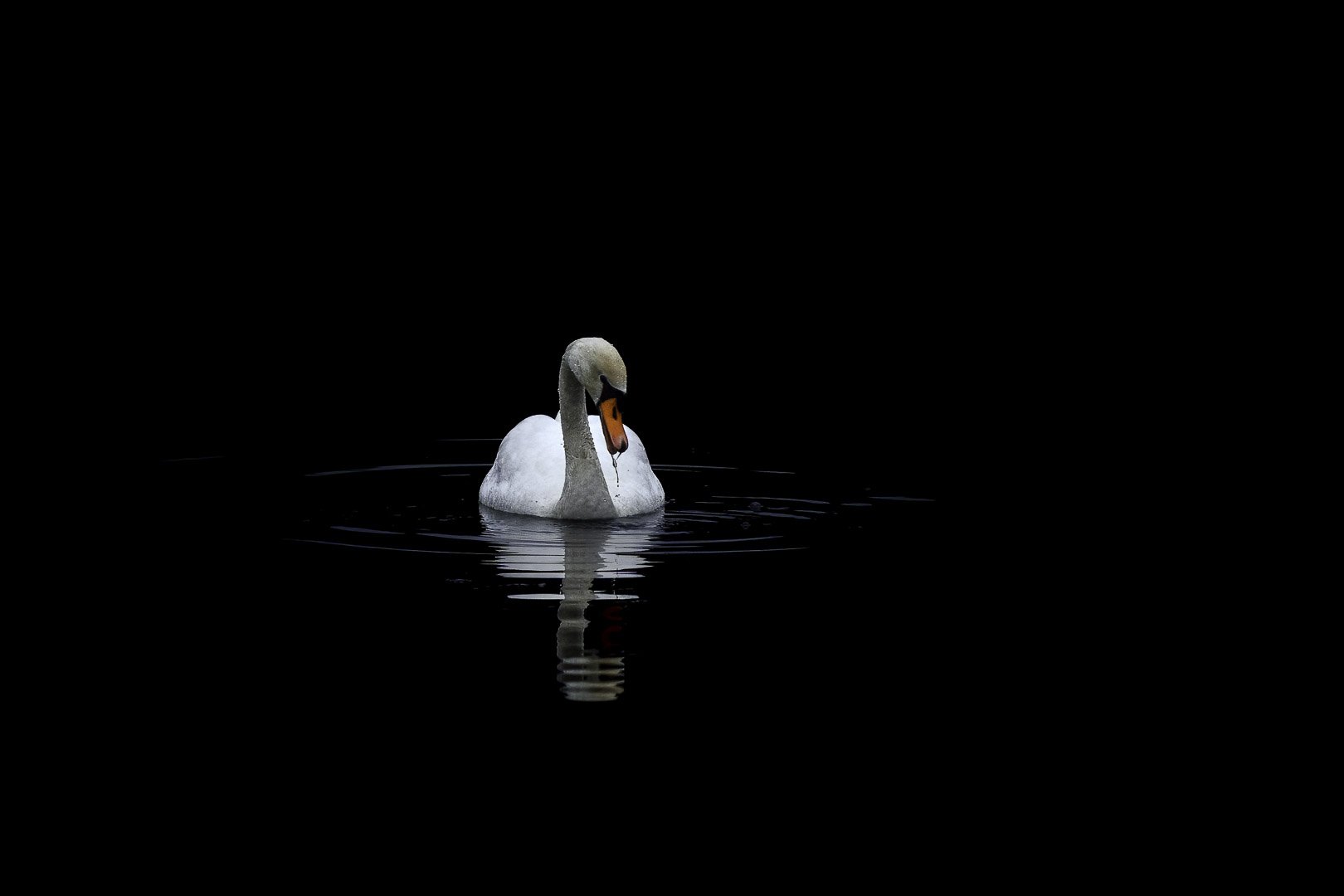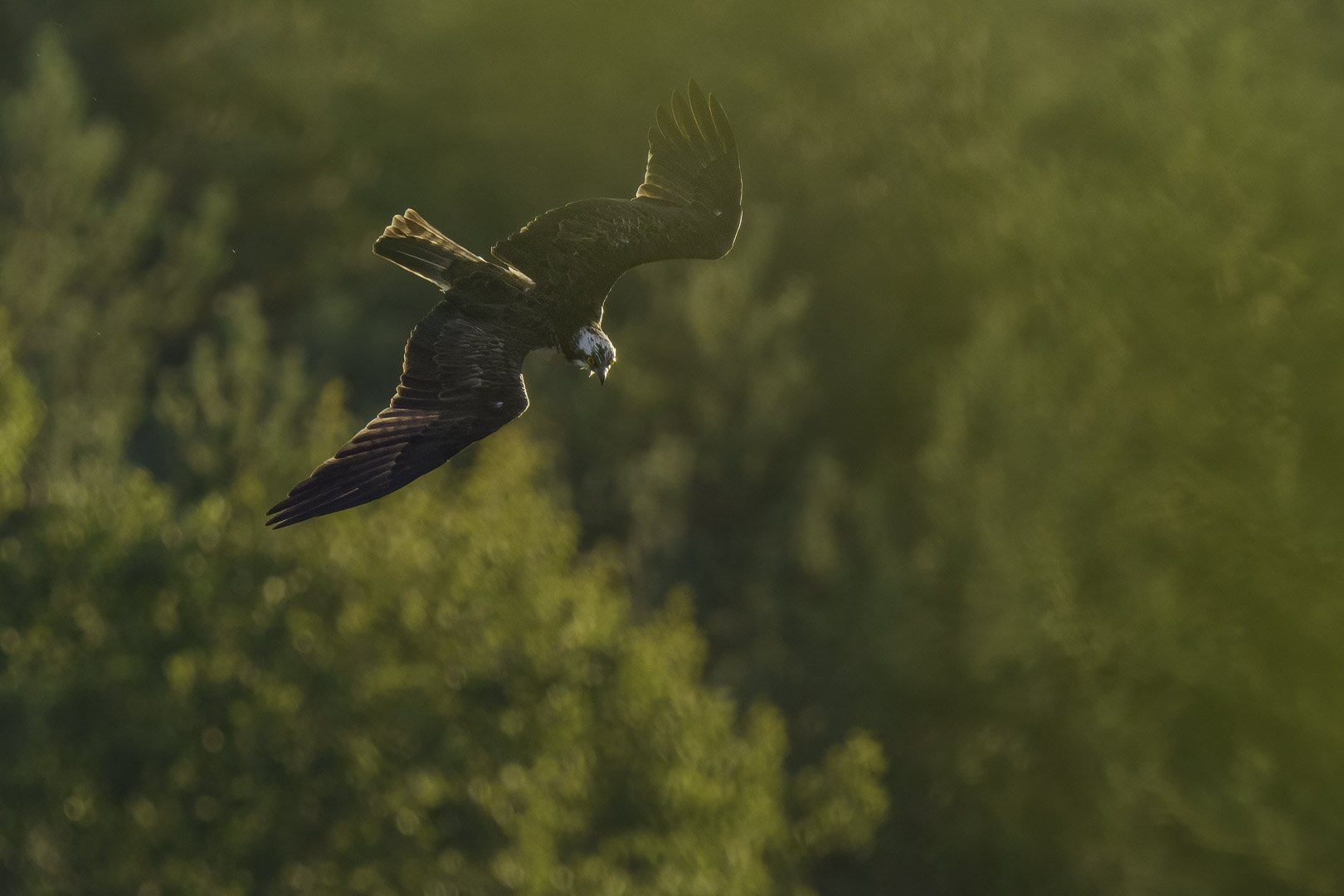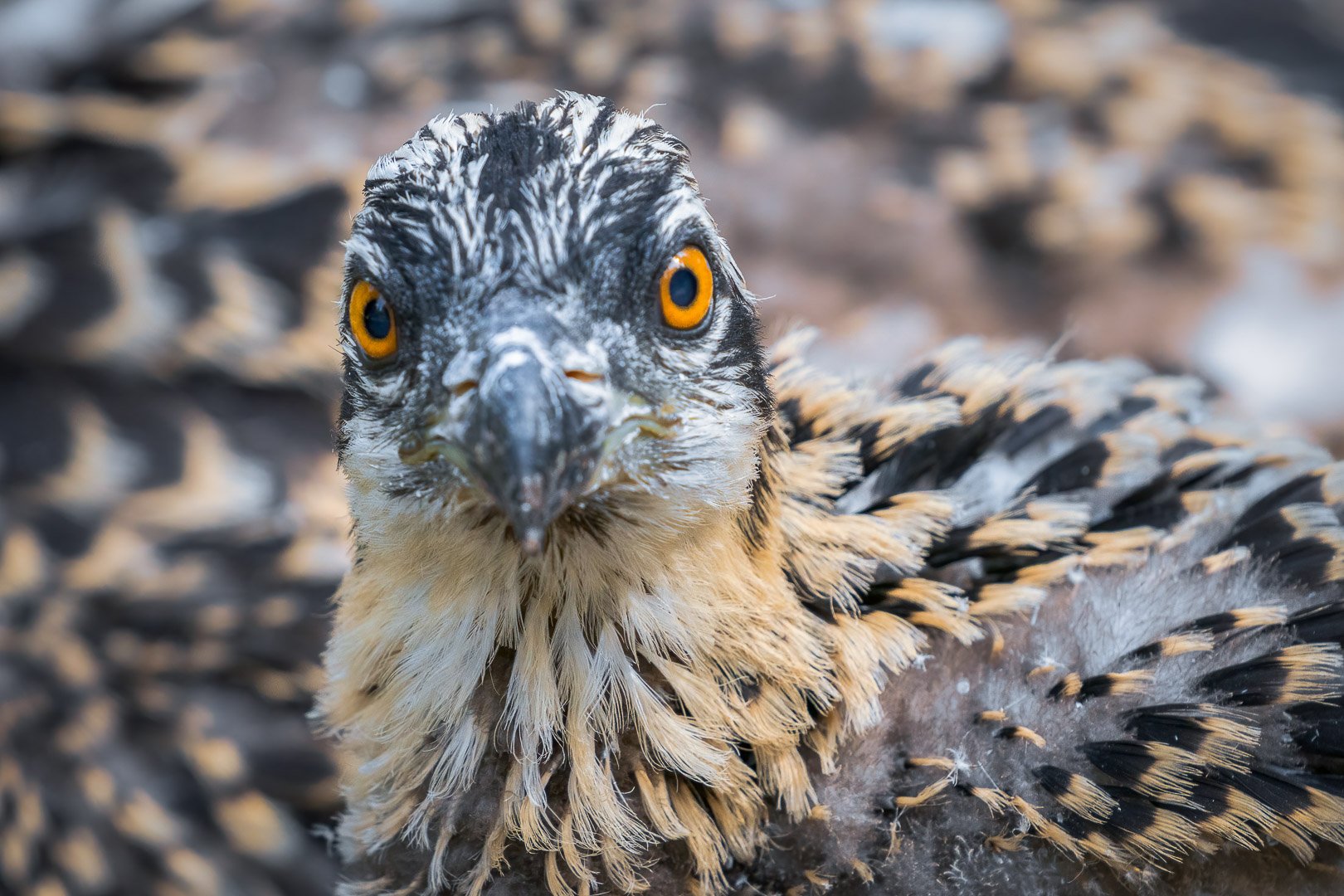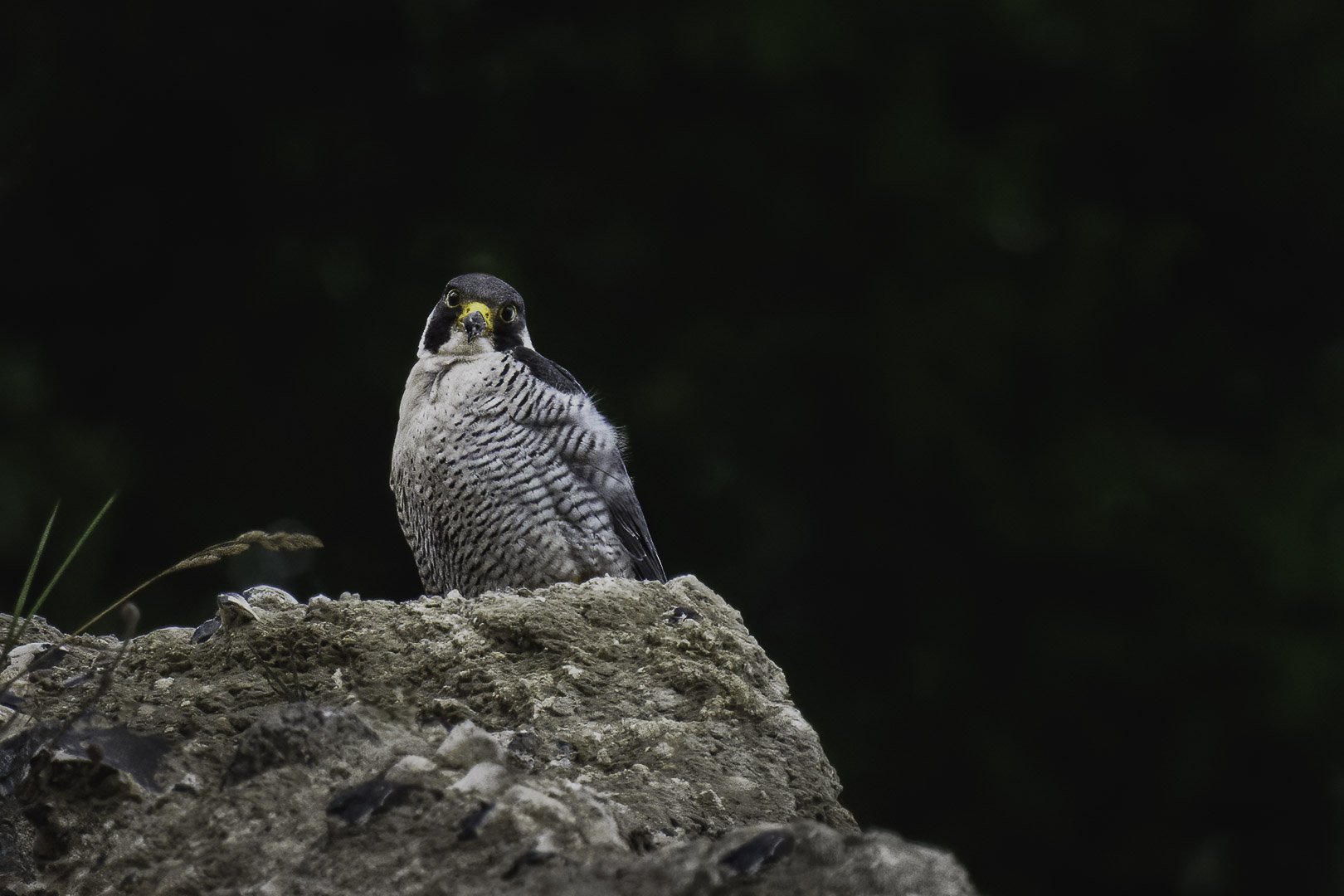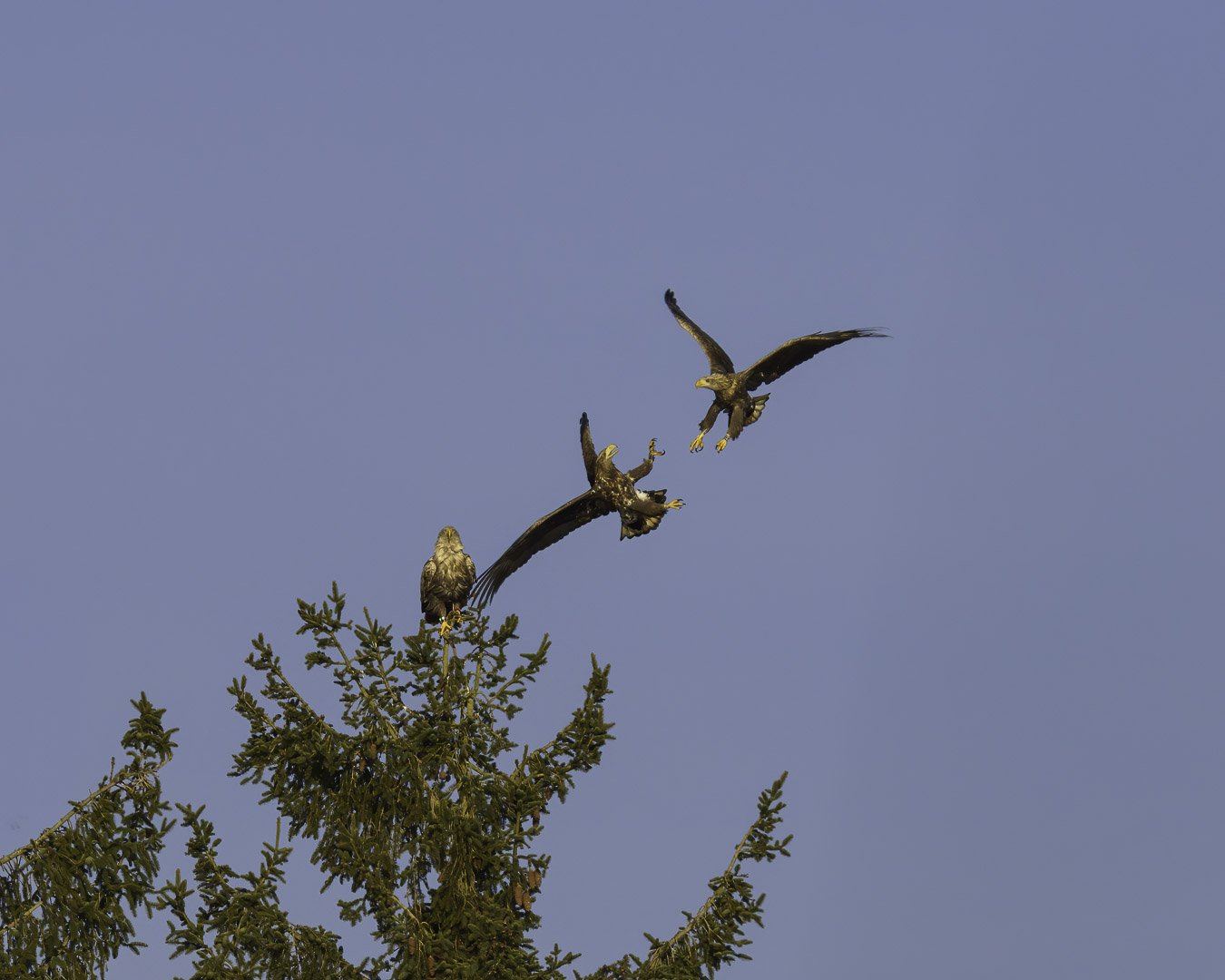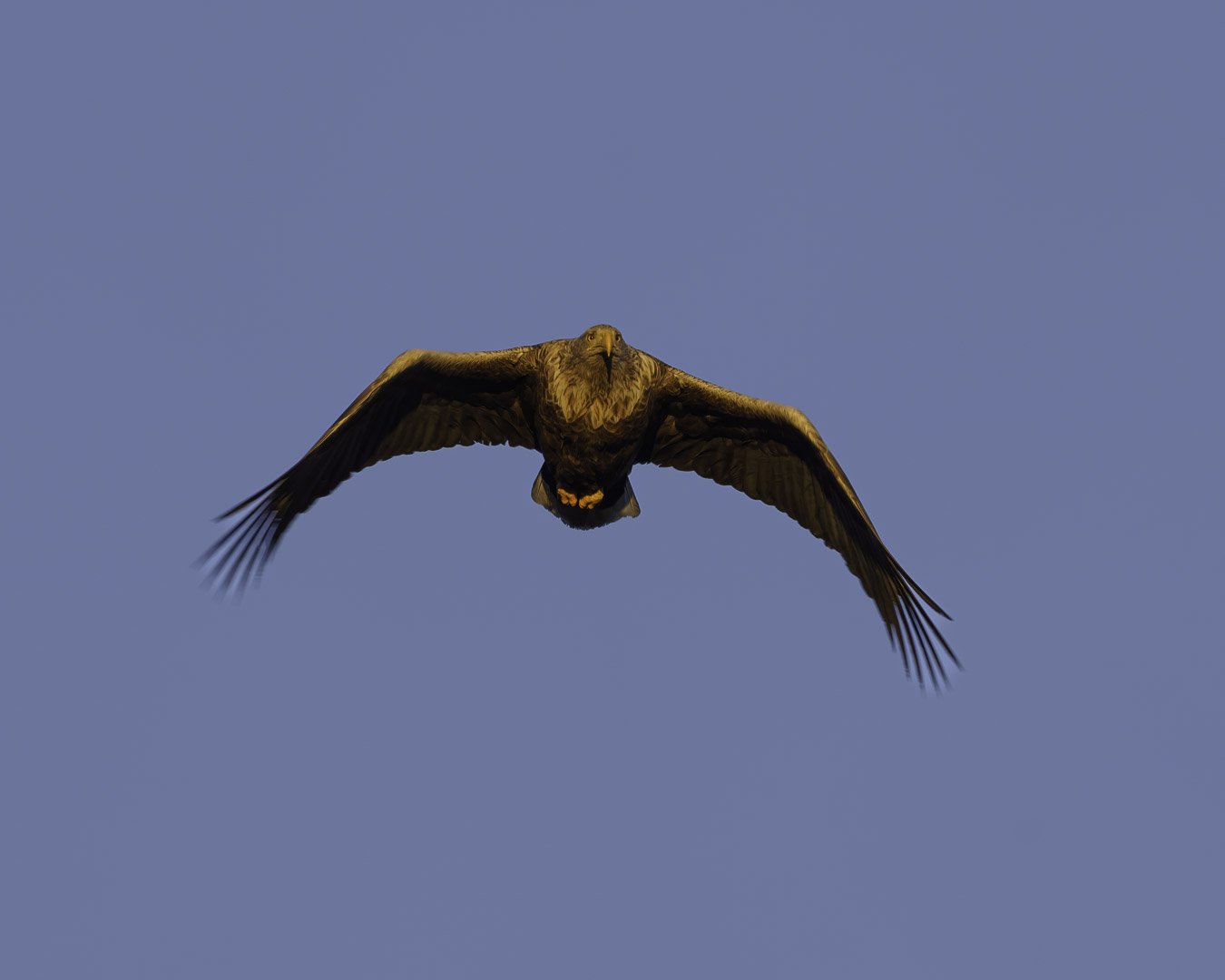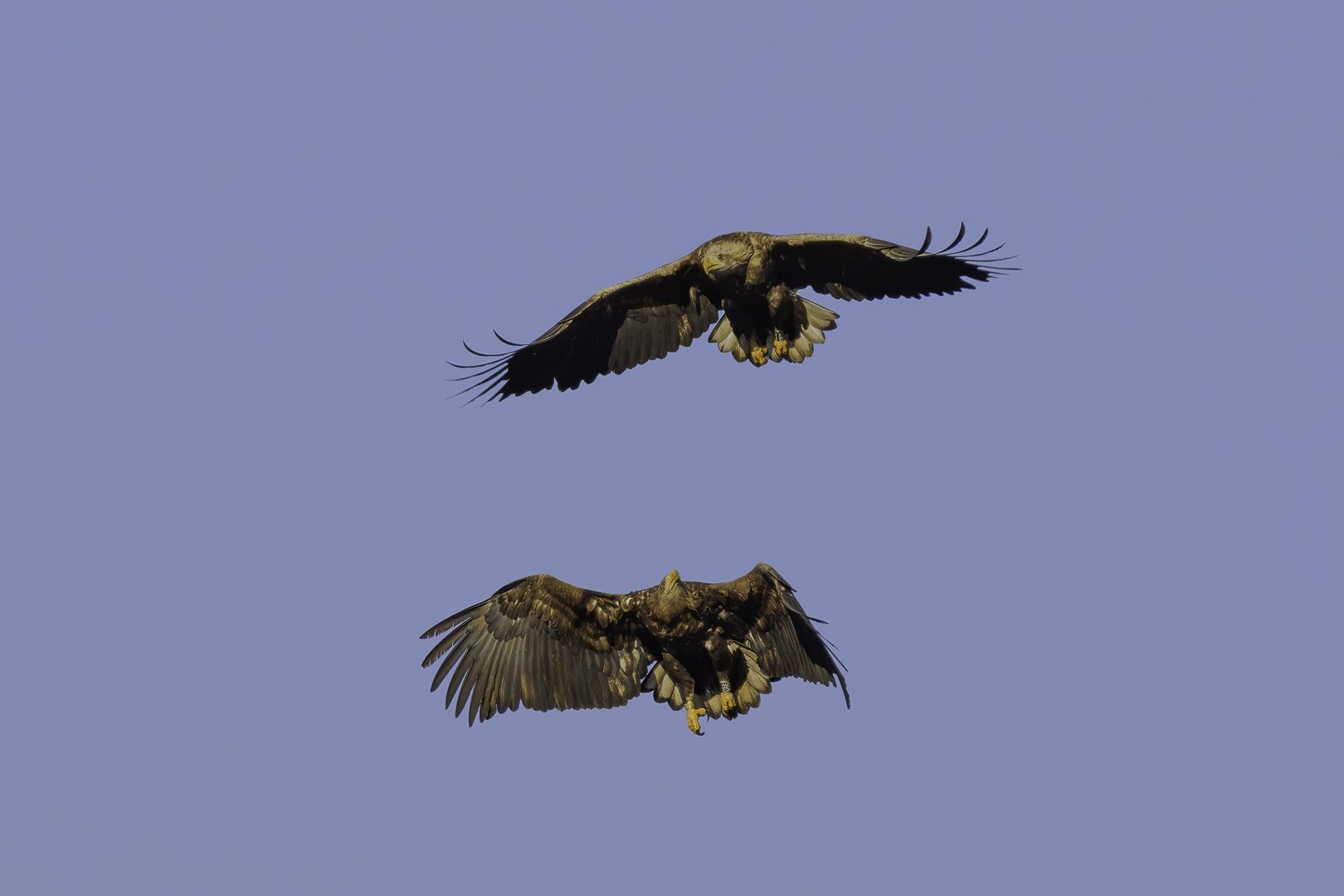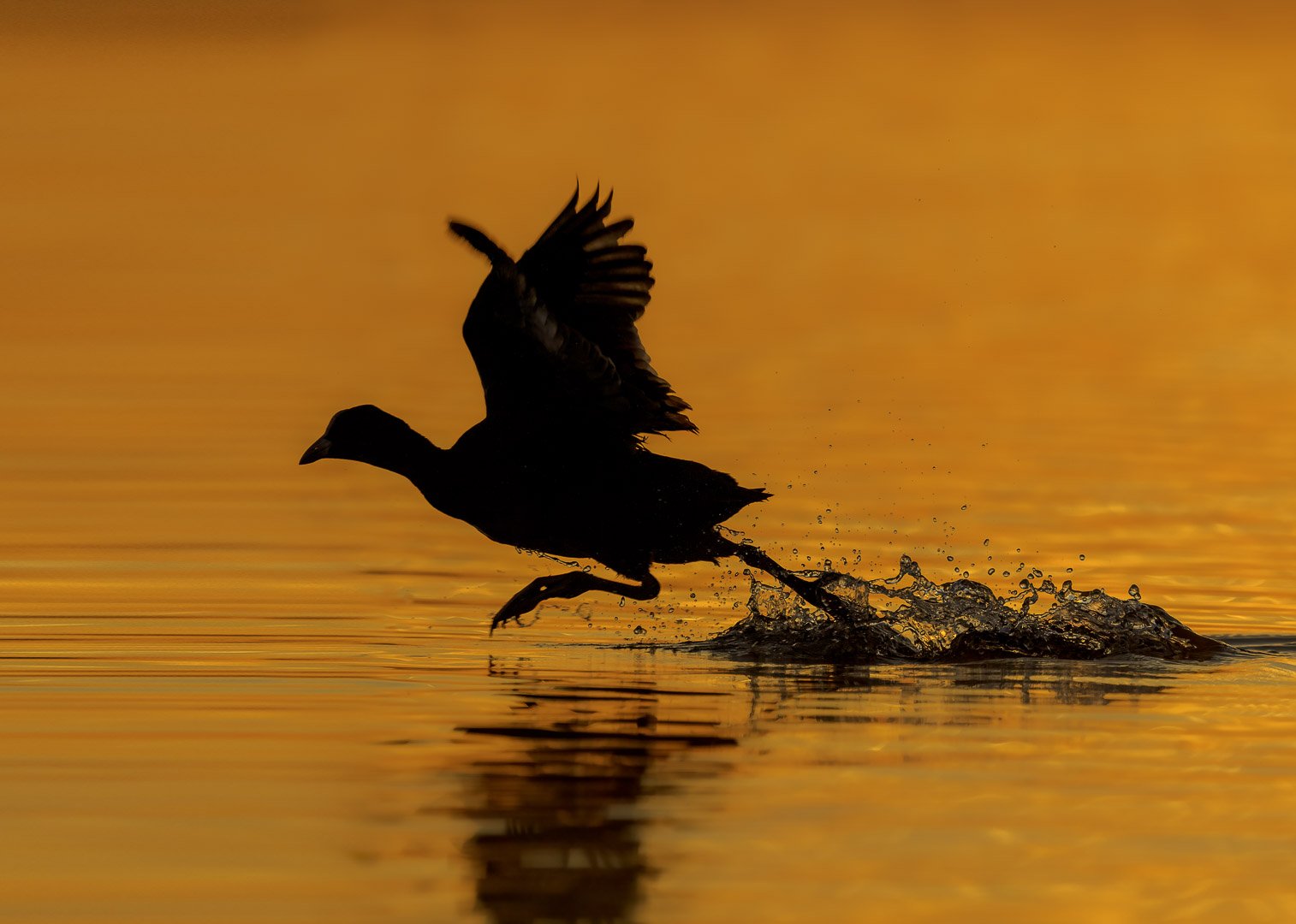Wildlife Season Start: White-Tailed Eagles & Goldeneyes
Goldeneye (Bucephala clangula) — Photographed in the Upper Palatinate, Bavaria
My wildlife season started on the second day, early in the morning at 5 AM, when I got out of bed and brewed coffee for the day ahead. My wife and I met with a fellow nature photographer who shares our passion for nature and photography. We had arranged to meet at 6:30 AM in the Upper Palatinate (Bavaria) to observe and photograph cranes. My friend Richard (check out his Instagram: @bergsteiger_1911) had spotted and observed a pair of cranes in the area over the past few days.
Seeing common cranes (Grus grus) in our region is exceptional because the area around Franconia and the Upper Palatinate is not a main crane route (more info about crane migration routes in Germany). However, a new crane route has been developing in southern Germany, specifically in Bavaria and Baden-Württemberg, over the past few years. Hundreds of cranes already migrate from the northern foothills of the Alps westward to France.
At our observation post in front of the group of trees
But back to the story 😀, when we reached our destination, we headed to a wet meadow near a wooded area. The walk from the parking lot to the meadow took about 10 minutes. By the time we arrived, the sun had just risen, according to the clock. The weather, however, was dark gray and stormy, with light snowfall. We all put on a camouflage poncho and positioned ourselves closely in front of a small island of trees in the meadow. The dark camouflage pattern of the ponchos and the background helped to obscure our human silhouettes.
It didn't take long before we experienced our first exciting moment. A young white-tailed eagle flew at a distance to our over one of the many ponds in the area. I managed to snap a shot before it flew too far away. It took maybe 2–3 minutes before ducks, cormorants, and geese could be seen startled and taking off from the pond. It was clear that the eagle had been spotted by the waterfowl. When various waterfowl take off simultaneously, it is usually a sign that a predator is approaching—a natural alarm signal.
Tip: Pay attention to this behavior the next time you are in an area with white-tailed eagles. Such behavior/signals can alert you to the presence of a predator before you even see it, signaling that you should have your camera ready.
Silver herons, buzzards, starlings, and cormorants were among the birds we could observe from our position. Unfortunately, there were no cranes.
After about 2 hours, Richard suggested, “Let's drive to another spot where I have seen the cranes recently. Maybe we'll have better luck there.”
After a brief discussion, I agreed: “Okay, let's check it out.” Since there were no animals close by on the meadow that we could disturb and the chances of crane photos were slim, there was no reason not to switch from a photo observation post to a scouting tour.
Tip: Why did I hesitate before deciding to move?
As I've often mentioned in my blog articles, photographing wild animals at close range requires a lot of patience. This involves blending into nature, not standing out as a human, and staying stationary. Moving from one place to another may scare off animals or keep them at a distance. Let nature come to you!
We drove about 15 minutes to the next nature area. It was an open area with many gravel ponds and a large wet meadow, possibly belonging to a fishing club. The first birds we saw were ruddy shelducks, gray geese, and starlings. We took the opportunity to have breakfast and drink coffee. During this time, we also observed a silver heron, ravens, and a red kite. This was a surprise, as I had never seen a red kite in the area this early. I've read that some red kites stay in certain areas over the winter instead of migrating south. Whether this bird was one of them, I don't know, but it was nice to see. The red kite was being chased and harassed by a crow. Unfortunately, the sun was behind them, creating a challenging backlight situation for taking decent photos. Still, I managed to get a few shots of this scenario.
Impressions of the Day:
We later spotted a great gray shrike about 150 meters away. I saw one for the first time last November, but it was very far away then.
I grabbed my monopod and camera and slowly approached. Richard joined me, as he had also photographed this bird during his last crane observation. We walked toward a bush at the edge of a forest path where the bird was perched. We stopped about 70 meters away and took some shots, maintaining a distance of about 50 meters to avoid scaring the bird. The shrike moved to the opposite side of the bush and perched on a red post in the reeds.
Perfect, we got a photo of the shrike in the open, which was great for documentation and future planning to photograph it as I envision. Tours like today's always help with planning.
How Does Such a Photo Help? It's simple: it helps me remember the location, situation, and landscape features. These photos also serve to identify species later if I'm unfamiliar with them. It automatically involves reading up and learning more about the species. I consider such photos as visual notes, which are more effective for me than an Excel table.
Great Gray Shrike on Post (Lanius excubitor)
After the shrike experience, we decided to head to one last spot to wrap up our wildlife safari in the Upper Palatinate. The final destination was a bit further away, but I can mention it here because it's a public and well-known place.
The last stop was the Rußweiher, where an observation telescope allows you to watch the osprey nest. You can also follow the osprey breeding via a live stream on YouTube.
On the way there, we saw many gray geese in the meadows along the roadside. I took the opportunity to capture a flight shot of them.
Gray Goose (Anser anser). Photo taken in the Bavarian Upper Palatinate
After a longer drive, we arrived at the large lake. The weather did not improve, and a strong wind blew across the lake. Most waterfowl, like swans, silver herons, mallards, cormorants, and goosanders, stayed at the edge of the lake, except for tufted ducks and pochards swimming in the middle. We also spotted a few goldeneyes that we had seen at a previous spot. Unfortunately, the ducks were too far away for a full-frame photo. I had long wanted to photograph the Goldeneye (Bucephala clangula) , but the opportunity never really arose. It wasn't high on my priority list.
As I stood by the water's edge, camera in hand, Richard suddenly called out, “A Goldeneye (Bucephala clangula) is flying low over the water!” I looked to the right and saw the beautiful bird speeding by but couldn't capture it in time and only got a shot of its tail. Luckily, there was a second chance, as another Goldeneye appeared shortly after the first one. Richard alerted me again. This time, I tracked it in my camera's viewfinder and took the shot. So, I thought, I finally got a decent picture, even though the light conditions were far from ideal. The photo of the Goldeneye is today's featured image, and you can see it at the top of the article.
With camouflage poncho & camera
As I've often experienced over the years, just when you think it's over, and you're ready to head home, something else happens. After saying goodbye to Richard, as we were all about to get into our cars, the natural alarm signal went off as all the waterfowl took to the air. Richard was the first to spot the approaching young white-tailed eagle and pointed it out.
Tip: At the end of a day full of wildlife observations, keep your camera ready, for example, when leaving the spot where you were photographing. Over the years, this has given me opportunities for unexpected and great photos.
To conclude, here are two final photos: the startled ducks and the young white-tailed eagle that caused the commotion. I hope you enjoyed my experiences from the first two days of my 2023 wildlife season start. If you haven't read the first part yet, you can catch up on my report from the previous day.
So the day ended without achieving our primary goal of seeing cranes, but it was still filled with wonderful experiences and sightings.
Next weekend, the focus will be on white-tailed eagles, my first attempt this year to get these elusive birds of prey close to my lens.
I'll report back, 😀 until then, good light and goodbye!











